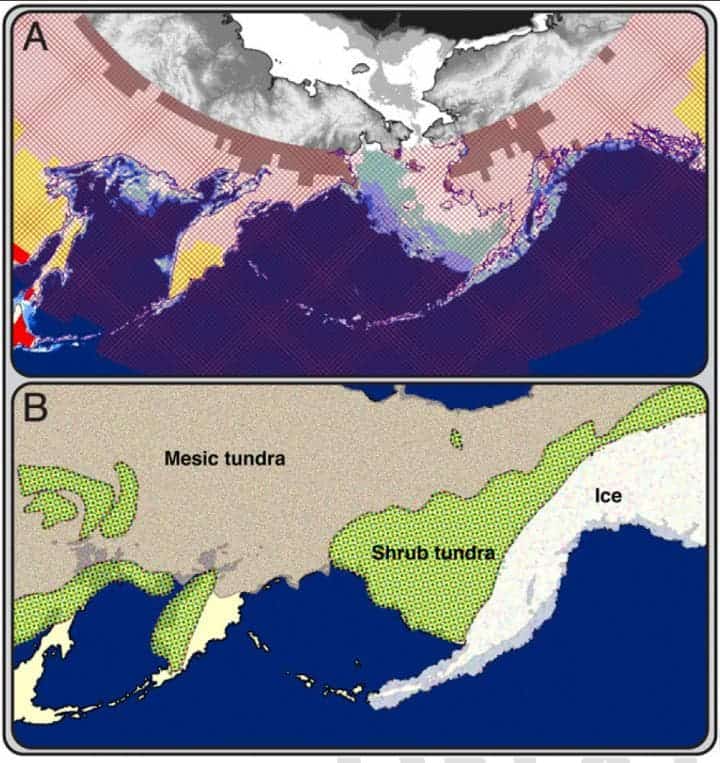About 20,000 years ago, groups of people living between East Asia and America underwent a mutation so that mothers could breastfeed more nutritious milk to their children. The gene responsible for the change controls many other features, such as teeth shape, that were changed by this single mutation.
A mutation to increase vitamin D
This ancient group of people lived so far north that half of the year is spent in complete darkness. They then did not receive enough vitamin D from the sun so they had to eat more animal fats to compensate. Then 20,000 years ago, a mutation arose to increase the branching density of mammary ducts in the breasts, which could have given more fat and vitamin D to their infants. Vitamin D is very important for the immune system, fat regulation, and calcium absorption.
The genetic mutation responsible for the branched mammary glands occurs in a gene called EDAR, which codes for the ectodysplasin A receptor. It also determines the density of sweat glands in the skin, the thickness of hair strands, and incisor shape. This new mutation would also have caused human incisors to become shovel-shaped. Shovel-shaped incisors are distinctive because they have ridges along the sides and biting edge on the inner side of the teeth. To link the tooth shape with the mutation, the researchers examined the frequency of shovel-shaped incisors in archaeological populations. Almost all Native Americans (before colonization) and 40% of contemporary East Asians have shoveled incisors.

“Examples of human adaptation provide insight to the relationship between genotype and phenotype. While we’ve known the connection between EDAR V370A and the tooth and hair effects, until we were able to locate the time and place of the selective event, we didn’t have a sense of why selection would have occurred on this variation in hair or teeth. Once we place the selection event in Beringia at that high latitude, the role that EDAR plays in mammary physiology immediately became a major point of interest. This effect occurs during the earliest stage of breast development, when the person is still in its mother’s womb. Prior to our work, breast biologists hadn’t been thinking about the embryonic stage of development as playing much of a role at all in breast physiology. I am reaching out to colleagues to try and establish a collaboration to explore how ductal branching may influence milk composition (a question that hadn’t been asked before, but now looks like a really useful research direction), and, with Prof. Kunxin Luo here at Berkeley, am already exploring the possible effects of breast cancer susceptibility related to this allele (V370A),” said Leslea Hlusko, an associate professor of integrative biology at the University of California, Berkeley, to ZME Science.
The people of Beringa
From previous genetic studies, we know that the Native Americans split off from other Asians more than 25,000 years ago but only arrived in North America 15,000 years ago. In this time, it is hypothesized that they lived in Beringa, an area between Asia and North America. It was an isolated but productive area. Some of these people went on to inhabit North America, while there is also genetic and linguistic evidence for other members returning to Asia.

“This Beringian population is a wonderful example of how human populations have come and gone over time, how populations are ephemeral. We all carry in our DNA pieces of multiple populations that existed in the past but then dispersed and meshed in with other populations. We tend to think of human biological variation as static and rooted in continental geography (such as racial concepts of caucasian, Africans, Asians, etc.). But, the reality is that human history over tens of thousands of years was much more dynamic. The fact that these people were living on a landmass that was only available because of lower sea levels helps to facilitate that point. Climate change brought them together in genetic isolation on the newly exposed Beringian Platform. And then, as sea levels rose again, the people dispersed. Some went west, back into Asia. And others went east and experienced the most amazing, very rapid expansion over two continents that hadn’t been home to humans before,” said Hlusko to ZME Science.
Therefore, these ancient peoples evolved to give their children the vitamins that they were lacking. In the process, a few other traits, like tooth shape, were changed along the way.
Hlusko et al. 2018. Proceedings of the National Academy of Sciences.






